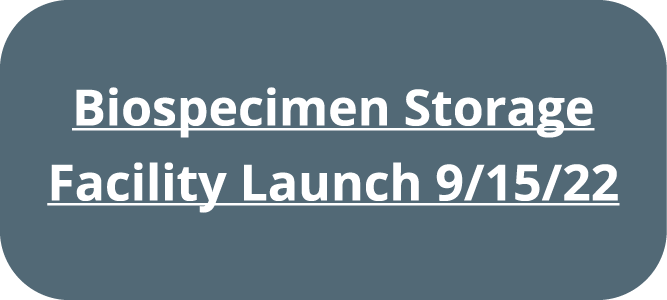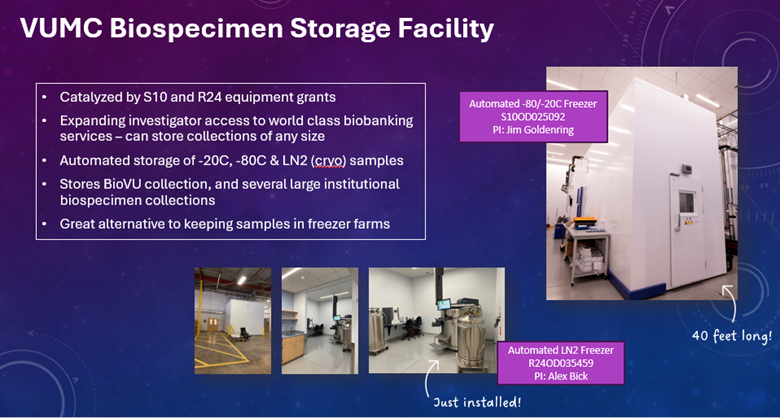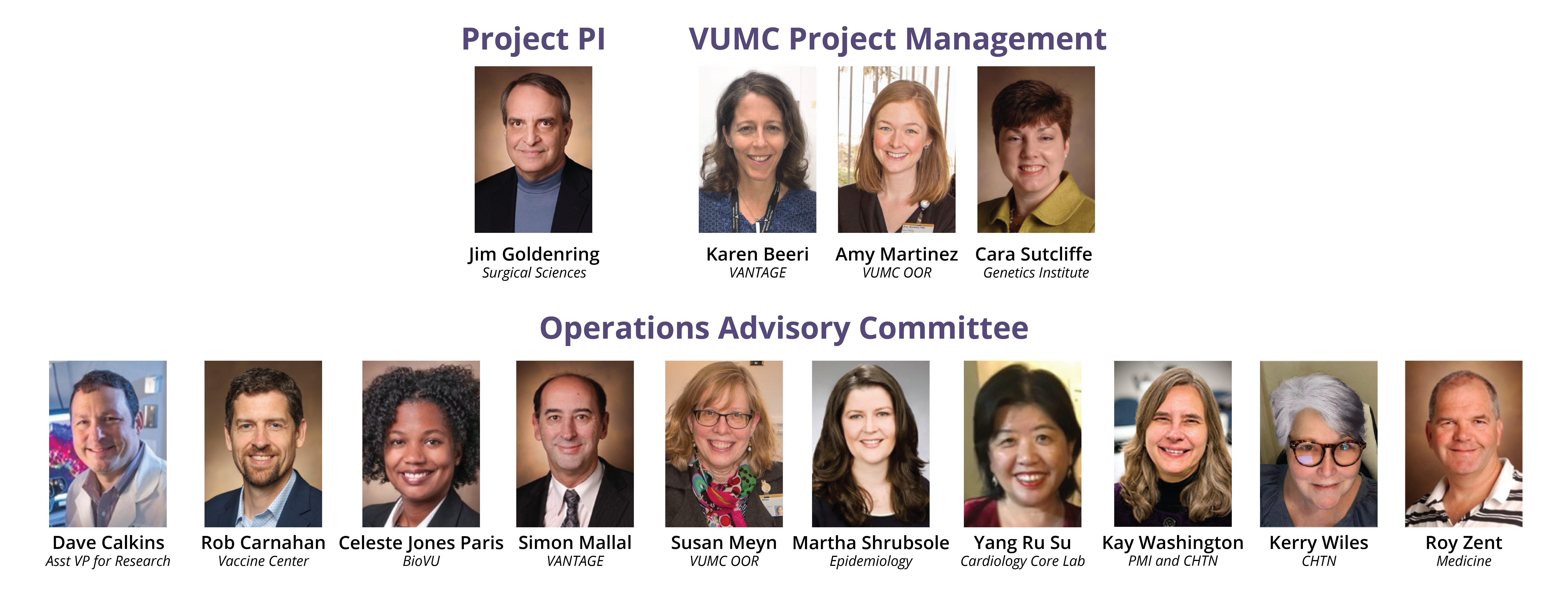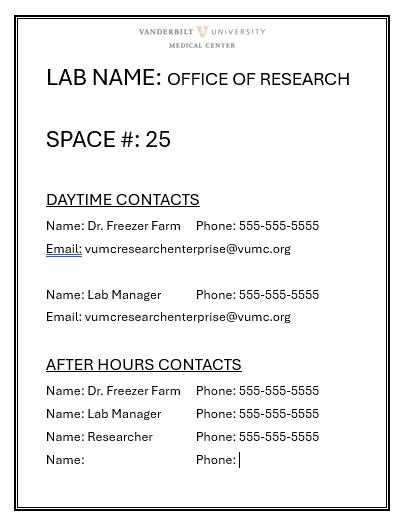
-

Interested in storing your collection in the Biostore system?

Please fill out this brief REDCap survey. VANTAGE staff will follow up to learn more about your samples and provide recommendations on storage format. Estimated pricing is also available upon request.

Project Overview
VUMC received a $2M NIH S10 High-End Instrumentation Award (PI: Dr. James Goldenring, Surgical Sciences) to purchase an Azenta BioStore II quadbank automated freezer system for large-scale biobanking. The BioStore II has capacity for more than 4 million samples and features both -20C and -80C banks for optimal preservation of multiple biospecimen types. The Biostore II also features multiple layers of power and cooling redundancy, providing one of the highest levels of sample security available.
VUMC has committed more than $5.1M over five years to supplement the Biostore II purchase and develop a comprehensive Biospecimen Storage Facility shared resource that offers biospecimen collection management and associated services. These funds will significantly subsidize user fees so that Vanderbilt investigators are able to utilize the resource at low cost. The facility began accepting user-submitted projects in 2022. Researchers can now partner with central biobanking staff to optimally manage their biospecimen collections. After the initial loading of large institutional collections, approximately 75% of the freezer’s capacity remained for new collections and individual investigator projects.
In 2023, VUMC received an NIH R24 shared equipment award (PI: Dr. Alex Bick, Medicine) for the purchase of an automated Azenta BioStore M60 Cryo system. The LN2-based cryogenic storage system holds up to 63,000 vials at -190°C. Installation of the new system allows the Biospecimen Storage Facility’s to offer cryo storage services to users. The facility expansion is complete, and cryo storage services are now available to users.
The VUMC Biospecimen Storage Facility is managed by staff experienced in biobanking and shared resource management, including Karen Beeri, MS. Ms. Beeri currently serves as manager in the Vanderbilt Technologies for Advanced Genomics core, where she oversees genotyping and biobanking for multiple large projects including VUMC’s >300,000 sample “BioVU” DNA collection. The new shared resource is also supported by an internal advisory committee that provides strategic oversight and development for the shared resource’s biospecimen management plan including staffing, sample integrity/security, and day-to-day operations.
The facility is now accepting user-submitted sample requests for -20C, -80C, and cryogenic samples, providing the ideal solution for managing Vanderbilt researchers' new and existing biospecimen collections. Samples are dropped off and picked up via a convenient sample transfer point in the VANTAGE laboratory (Medical Center North), and transported at-temperature via courier to the automated storage facility. After submitting a sample pull request, samples can picked up in the VANTAGE laboratory.
Why use the automated biospecimen storage facility?
Multiple layers of power and cooling redundancy for superior sample integrity
Institutionally-subsidized pricing for Vanderbilt investigators makes storage cost-effective
User-facing LIMS software aids investigators with sample annotation and tracking
Depth of expertise from staff with years of biobanking experience (e.g. BioVU collection)
Enhanced sample security via controlled access and 24/7 monitoring
Separate zones for -20C and -80C sample storage
Flexibility in container types to accommodate a broad range of collections
Rapid sample loading and picking minimizes temperature fluctuations
Improved space, energy and labor efficiency vs. non-automated in-lab freezers
Expanded capacity for large and growing biospecimen collections, e.g. multiyear studies
Operations Advisory Committee
An Operations Advisory Committee for the new automated freezer shared resource is comprised of VUMC faculty and staff experienced in biobanking and shared resource management. The committee provides development support and strategic oversight for the shared resource’s biospecimen management plan.

-
VUMC maintains several freezer farm rooms in Medical Center North and Light Hall. This space is available for allocation to members of VUMC research entities after an appropriate review process completed by the Freezer Resource Allocation Committee. To initiate your request for freezer farm space, please submit this short form: https://redcap.link/freezer-request
The conduct of extramurally funded peer-reviewed research deemed impactful in accordance with VUMC Strategic Directions and other institutional metrics is given the highest priority for allocation of freezer farm space. The following prioritization scale guides the allocation of freezer farm space in order of institutional priority and alignment with VUMC Strategic Directions:
- Commitments made in executive letters of offer to institutional leaders or individual investigators consistent with actual need per the conditions stipulated in the offer and current capacity.
- Research funded by the National Institute of Health (NIH) or other federal organizations providing full indirect costs that requires the acquisition, curation, and use of human biospecimens.
- Impactful research not funded by extramural support with immediate or near-term potential for commercialization, licensing, or similarly valuated intellectual property involving acquisition, curation, and use of human biospecimens.
- Research funded by the NIH or other federal organizations providing full indirect costs that involves nonhuman samples of impactful, long-term value.
- Impactful research not funded by extramural support with immediate or near-term potential for commercialization, licensing, or similarly valuated intellectual property involving rare or other highly valuable samples of long-term utility.
- Disease/health-relevant research that is: a) conducted with non-federally funded agencies providing fully expected indirect costs, such as clinical trials or contractual industry-sponsored projects, involving curation of human biospecimens; or b) conducted with non-federally funded agencies providing fully expected indirect costs, such as clinical trials or contractual industry-sponsored projects, involving rare or other samples of impactful, long-term value.
- Commitments made in executive letters of offer to institutional leaders or individual investigators consistent with actual need per the conditions stipulated in the offer and current capacity.
-
Labeling your freezers with ownership and contact information is a best practice in biospecimen storage. At minimum, emergency contact information should be clear and up-to-date at all times.
The template below is required for freezers in any of VUMC's institutional freezer farms, and highly recommended for freezers in equipment corridors and individual labs.
Download a copy of the freezer farm contact info template here.
Sample populated template:
